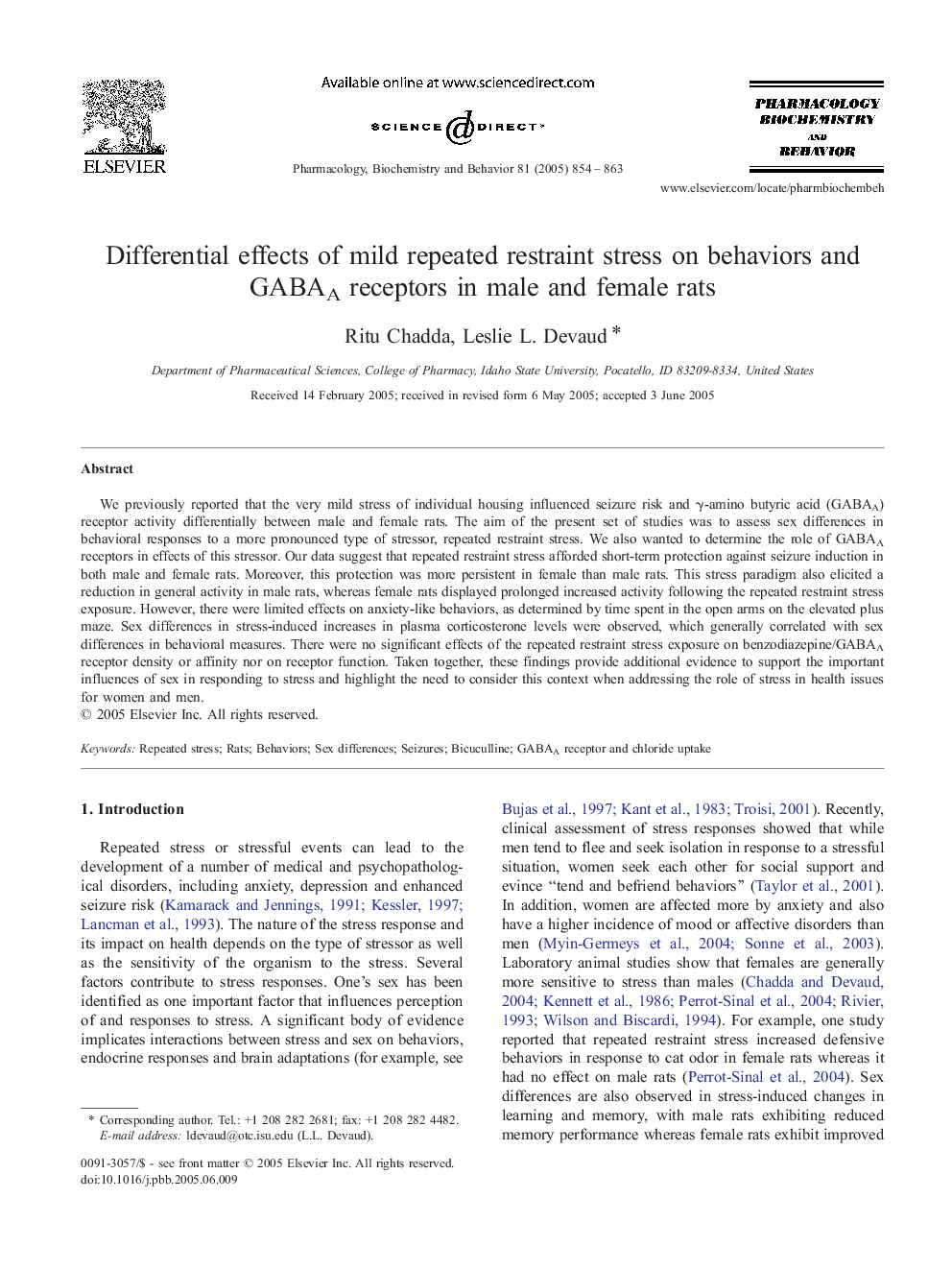| Article ID | Journal | Published Year | Pages | File Type |
|---|---|---|---|---|
| 10838553 | Pharmacology Biochemistry and Behavior | 2005 | 10 Pages |
Abstract
We previously reported that the very mild stress of individual housing influenced seizure risk and γ-amino butyric acid (GABAA) receptor activity differentially between male and female rats. The aim of the present set of studies was to assess sex differences in behavioral responses to a more pronounced type of stressor, repeated restraint stress. We also wanted to determine the role of GABAA receptors in effects of this stressor. Our data suggest that repeated restraint stress afforded short-term protection against seizure induction in both male and female rats. Moreover, this protection was more persistent in female than male rats. This stress paradigm also elicited a reduction in general activity in male rats, whereas female rats displayed prolonged increased activity following the repeated restraint stress exposure. However, there were limited effects on anxiety-like behaviors, as determined by time spent in the open arms on the elevated plus maze. Sex differences in stress-induced increases in plasma corticosterone levels were observed, which generally correlated with sex differences in behavioral measures. There were no significant effects of the repeated restraint stress exposure on benzodiazepine/GABAA receptor density or affinity nor on receptor function. Taken together, these findings provide additional evidence to support the important influences of sex in responding to stress and highlight the need to consider this context when addressing the role of stress in health issues for women and men.
Related Topics
Life Sciences
Biochemistry, Genetics and Molecular Biology
Biochemistry
Authors
Ritu Chadda, Leslie L. Devaud,
